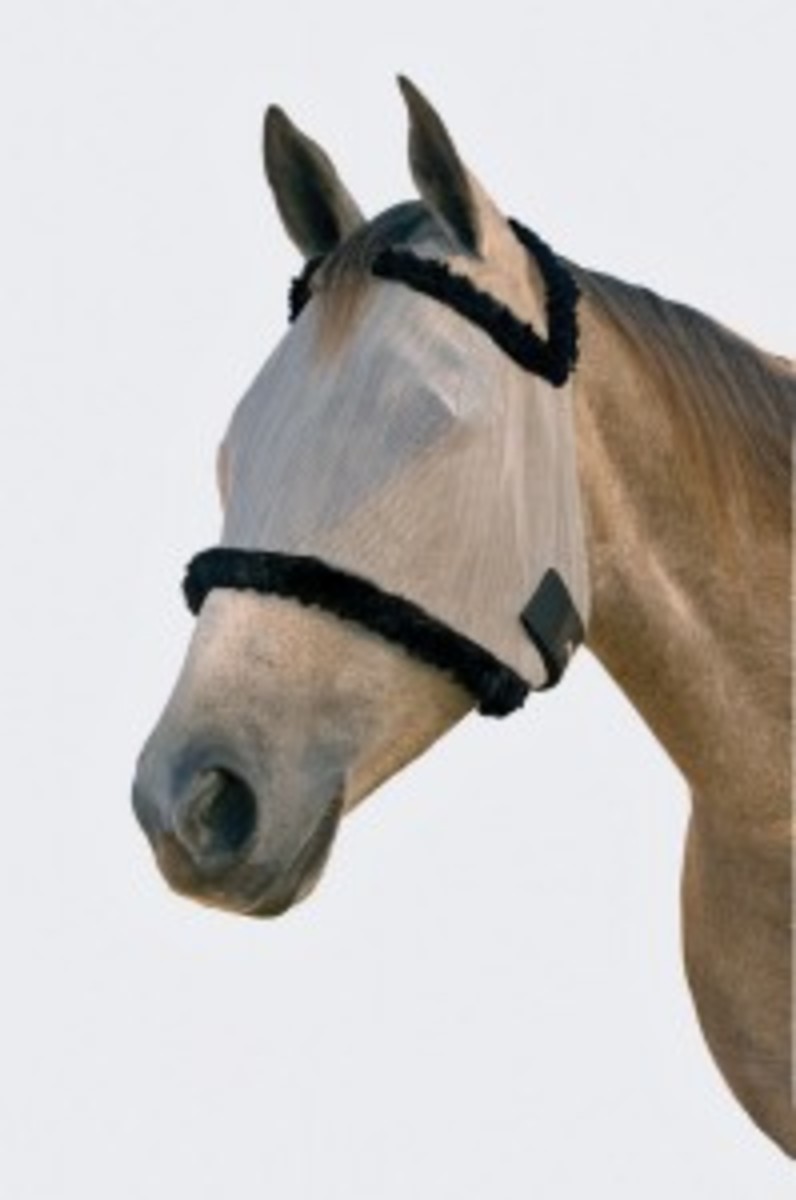
A full mane, forelock, and tail act as nature’s fly-protection system for your horse. But if your horse isn’t so endowed, you may need to consider a fly mask. Learn more about how to properly use fly masks below.
[READ: 7 Fly-Fighting Solutions]
Biting and blood-sucking insects around your horse’s face and head can be a real source of misery throughout the fly season. Modern fly masks are designed to protect your horse from these nasty pests which can spread germs as well as cause discomfort.
Do’s and Don’ts
We asked Barb Crabbe, DVM, H&R‘s consulting veterinarian and author of The Comprehensive Guide to Equine Veterinary Medicine (Sterling Publishing Co., Inc.), to share key dos and don’ts for using fly masks safely and effectively.
Here’s what she told us.
Do choose a well-made mask constructed of a nonabrasive material with soft linings wherever the mask comes in contact with your horse’s face.
Do make sure the mask fits your horse’s head properly, so it can be adjusted to lie smoothly against his face. The mask’s lower edge should fall at least an inch below the bottom of your horse’s cheekbone; otherwise, a gap created by the cheekbone will allow easy entry to flies under your horse’s jaw. In general, the more of your horse’s face that’s covered by the mask, the greater the protection (although some horses take exception to full-face masks and are less likely to rub off a more standard-coverage model).
Do pay especially careful attention to how the mask fits over your horse’s eyes. This is an important safety consideration, as a corneal ulcer can result if there’s contact between any part of your horse’s eye (including his eyelash) and his fly mask. The mask should be designed with darts or rounded insets to enable the front part of the mask to be permanently raised for full clearance all around your horse’s eyes, check from every angle, with your horse’s head in various positions, raised and lowered.
Don’t adjust the mask so that it’s snug against your horse’s face and jaw. You should be able to slip your finger easily between the mask and your horse’s face; otherwise, uncomfortable pressure points can create rubs and sores or cause your horse to work the mask off. (And, in any event, flies don’t try to muscle their way under the mask, they just crawl up onto it, where they don’t bother your horse.)
Don’t forget your horse’s ears. If gnats or midges are a problem in your area, a mask with ear bonnets may be preferable. (Be aware, however, that some horses object to ear coverings and will try harder to get such a mask off. Experiment with different mask styles; your horse may prefer a soft-netting model that slips easily over the ears.)
Do check over the mask every day, looking for ripped or worn areas, stray fibers from the mesh, stickers, or anything else that could cause a problem. Replace a damaged mask if it can’t be safely repaired. Also, inspect your horse’s face and head daily, looking for rubs and sores.
Don’t leave the mask on overnight. Your horse doesn’t need it at night, and he’s safer without it.
Do keep it clean. Dirt collected in the mesh can fall into your horse’s eyes, and an overall grimy mask can lead to skin infections. Having an extra mask for each horse makes washing them much easier.
Do consider applying fly repellent around the face under the mask during the worst of the fly season, for extra protection.
Riding in Fly Season?
Riding-model fly masks are a wonderful innovation. They’re easier for your horse to see through than a standard mask, so don’t compromise his vision during riding. They’re typically not as sturdy as a regular mask, however, so aren’t meant to be left on while your horse is turned out.

But for days when the flies are particularly bad or if your horse is especially sensitive to them, a riding fly mask can be an excellent investment.
[READ ABOUT: Feed-Through Fly Control]







